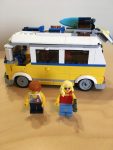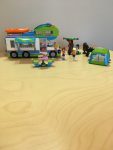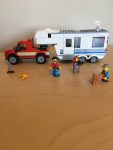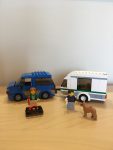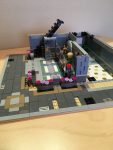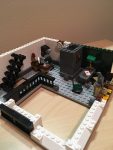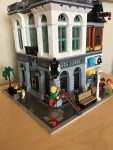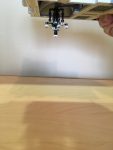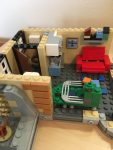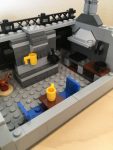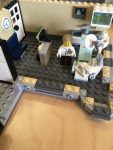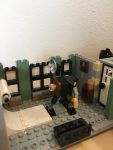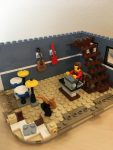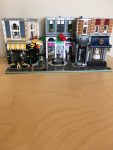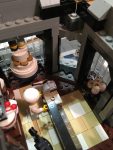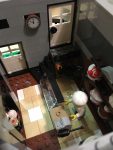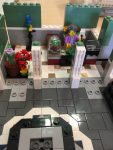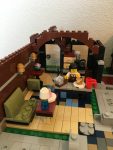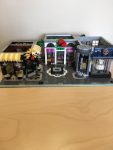RV stands for recreational vehicle and usually means some type of vehicle used for vacation camping. Some of us expand beyond vacationing into living full time in an RV.
Lego has made kits for the most popular types of hard-sided RVs. The first kit I bought when I returned to this new-old hobby was a Class A motorhome.
Class A:
These are the big motorhomes you see going down the highway usually pulling a car behind them. This one is pulling a boat so it must belong to Jim and Sandie. We lived in a Class A for about a year and a half.
Class B:
A Class B motorhome is built inside a van; these are also known as conversion vans. This was the type we first owned back in the 1980s and it’s the type my last one was.
Class C:
A Class C motorhome is built on a cut-away truck or van chassis. You can recognize it by the bed being located over the cab. We lived in one of these for another year and a half.
5th Wheel:
This type of trailer gets its name from way back when automobiles had a spare tire mounted on the trunk. The hitch of this trailer was designed to attach to that 5th wheel. Nowadays that hitch mount is in the back of a truck–sometimes a really BIG truck.
Travel Trailer:
This type is also known as a bumper pull although nowadays cars don’t have the type of bumpers that can handle a trailer hitch. But you can get a frame mounted hitch to pull one of these.
Tent Trailer:
Many campers, including us, start out with a tent trailer. I don’t have a picture of one of those but they look like a tent mounted on top of a box trailer. I suppose I could have faked a picture by placing the tent that came with the Class C kit on a box I could have built on the boat trailer. But then it would not have truly been a Lego RV kit like these others are. And I don’t want to be accused of false advertising.
TTYL,
Linda


